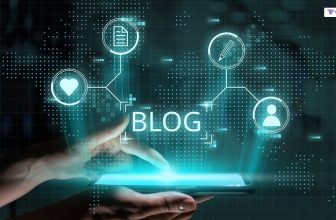
As we move further into 2025, technology continues to change at a pace the world has never seen before.
Leading the way in this revolution are clever systems, quantum advancements, immersive spatial interfaces, and strengthened cybersecurity models.
Izonemedia360.com examines these technologies in the context of game-changing trends on the cusp of reshaping industries.
This comprehensive forecast concentrates on four pivotal trends: agentic AI, quantum computing, spatial computing, AI governance, and post-quantum cryptography.
Agentic AI: Autonomous Systems In Command

Agentic AI transforms the traditional AI system, which enables autonomous decision-making and, at the same time, action-taking capabilities.
1. How Agentic AI Operates
Agentic AI describes autonomous systems in action to accomplish intricate tasks with little or no human intervention.
AI agents are defined by their goal-driven behavior, self-awareness, context awareness, and autonomy of decision-making.
In contrast to conventional AI models, where human input is required at each step, agentic AI can:
- Set its own sub-goals.
- Communicate with several APIs, software, and hardware systems.
- Readapt strategies in response to changing environments or feedback.
- Learn iteratively through self-created experience.
Examples are autonomous research agents, financial trading robots with risk management controls, and autonomous customer service bots able to solve multistep problems.
2. Business Applications Of Autonomous AI
Companies across industries are adopting agentic AI to enhance efficiency and scalability
- Finance: Autonomous trading agents reasoning about markets and trading in milliseconds.
- Healthcare: Artificial intelligence-assisted diagnostics that independently read medical scans and recommend treatment.
- Retail: Inventory bots optimizing supply chain operations.
- Marketing: Autonomous content generation agents crafting customized ad campaigns.
The main advantage is lowering the cost of operations while augmenting responsiveness and accuracy in real-time scenarios.
3. Implementation Challenges
Its promise aside, implementing agentic AI entails significant challenges:
- Safety and Control: Making sure autonomous agents don’t follow dangerous unintended objectives.
- Data Privacy: Agentic AI systems tend to expose sensitive information, which is a GDPR and HIPAA compliance issue.
- Infrastructure: High storage and compute needs test current IT infrastructures.
- Human Trust: Trust in the decisions made by autonomous agents is still a major adoption obstacle.
4. Future Of AI Autonomy
The future of agentic AI will probably involve systems with shared autonomy, in which humans work dynamically alongside AI agents.
We should expect standardized frameworks for agent action, stronger AI alignment protocols, and regulatory standards that keep AI agents in line with human values.
Quantum Computing Commercialization

As the commercialization of Quantum Computers is fast approaching, the market is expected to reach USD 1.3 trillion by 2035, as per iZonemedia360.com Tech Innovation experts.
1. Quantum Computing Basics
Quantum computing takes advantage of the laws of quantum mechanics—superposition, entanglement, and quantum tunneling—to make calculations that traditional computers cannot make efficiently.
Traditional bits are binary, but qubits are able to represent many states at one time, allowing calculations to be performed exponentially quicker.
2. Business Applications In 2025
In 2025, quantum computing is moving from theory to actual application:
- Pharmaceutical Discovery: Modeling molecular interactions at atomic accuracy, cutting R&D cycles.
- Optimization Problems: Resolving intricate logistics, routing, and scheduling problems in manufacturing and supply chains.
- Financial Modeling: Augmenting portfolio optimization, fraud detection, and risk analysis with real-time quantum algorithms.
- Climate Modeling: Predicting climate impact scenarios through quantum-augmented simulations.
Big companies such as IBM, Google, and new startups are partnering with industries to pilot real-world applications of quantum.
3. Quantum-as-a-Service (QaaS) Models
Cloud-based access to quantum computing is transforming adoption:
- QaaS platforms such as IBM Quantum, Amazon Braket, and Microsoft Azure Quantum enable developers to test quantum algorithms.
- Subscription models reduce the entry barrier for startups and research institutions.
- Hybrid models combine quantum processors with classical systems to maximize workloads
Such models are pivotal in democratizing access and developing a quantum development ecosystem.
Spatial Computing Revolution

With the help of Spatial Computing, the trend of technological reshaping of business operations is taking place today. Back in 2022, the global spatial computing market hit $102.5 billion.
1. AR/VR Integration In Business
Spatial computing combines AR (Augmented Reality), VR (Virtual Reality), and MR (Mixed Reality) technologies to harmonize physical and virtual spaces. By 2025, the technology will be fully embedded in AR, VR, and MR solutions for:
- Virtual try-ons and immersive product demonstrations
- Interactive learning modules and virtual classrooms
- Virtual property tours and design simulations
- Virtual meeting rooms and remote collaboration in 3D spaces.
Enterprise-class devices such as Apple Vision Pro and Meta Quest 3 are making these experiences possible with greater fidelity and usability.
2. Digital Twin Developments
Digital twins—computer simulations of physical systems—are foundational to spatial computing. In 2025:
- Manufacturers employ digital twins to track machine performance in real time.
- Smart cities depend on infrastructure twins to model traffic, utilities, and energy consumption.
- Healthcare adopts anatomical digital twins for personalized diagnostics and surgical planning.
The accuracy and predictive power of digital twins have become essential to industry 4.0 strategies.
3. Spatial Computing Hardware
2025 has seen rapid advancement in spatial hardware:
- Lightweight AR glasses with retinal projection and eye-tracking.
- Spatial sensors with advanced depth mapping and environmental awareness.
- Wearables with haptic feedback and biometric monitoring.
These advances enable mass adoption across sectors by reducing costs and enhancing user comfort.
AI Governance Platforms

As AI governance is becoming crucial in the business world, the adoption of AI technologies is increasing. As per a recent study, about 58% of organizations use complete basic AI risk assessments, despite the concerns of ethical implications and compliance.
1. Regulatory Compliance Tools
AI governance platforms are now mandatory to ensure that AI systems comply with regulations:
- Compliance tools for GDPR, CCPA, and HIPAA.
- Audit trails for AI decisions to enhance transparency.
- Consent management systems are integrated into AI workflows.
These platforms enable businesses to sidestep legal liabilities while developing reliable AI solutions.
2. Ethical AI Framework
Artificial intelligence ethics is now a boardroom issue. Governance platforms now feature:
- Bias detection engines that monitor AI models for bias in behavior.
- Value alignment modules to make sure AI choices support human-focused ethics.
- Whitelisting/blacklisting datasets to avoid the usage of harmful content.
These frameworks are important for social acceptance and the sustainable development of AI technologies.
3. Risk Management Systems
AI raises novel risks—technical and reputational. AI governance platforms blend:
- Real-time risk dashboards for tracking anomalies.
- Scenario planning for adversarial AI threats.
- Incident response systems for model failure or adverse consequences.
Enterprises are merging these systems with cybersecurity technologies to uphold resilience and control.\
Post-Quantum Cryptography

Post-quantum cryptography stands out as the most vital technological trend in cybersecurity, as it faces an unprecedented challenge.
As per iZonemedia360.com Tech Innovation Experts, they are warning that quantum computers might make the current method of encryption obsolete.
1. Quantum Threats To Existing Encryption
As quantum computers become more powerful, they promise to shatter commonly employed encryption schemes such as RSA, ECC, and Diffie-Hellman.
Shor’s algorithm can theoretically quickly factor large numbers, making conventional encryption irrelevant. This impending threat has spurred critical worldwide efforts towards quantum-safe cryptography.
2. PQC Implementation Strategies
Organizations in 2025 are:
- Transitioning to NIST-approved algorithms CRYSTALS-Kyber and Dilithium.
- Creating hybrid encryption schemes that blend classical and post-quantum algorithms for phased transition.
- Adoption of PQC in TLS/SSL protocols for web protection.
- Quantum-readiness testing of their information technology environments.
Governments and businesses are mandating quantum-resistant standards in defense, finance, and healthcare.
3. Adoption Timeline
Although total adoption is a decade away, some notable milestones for 2025 are:
- NIST’s completion of PQC standards for worldwide interoperability.
- PQC toolkits embedded within cloud platforms (AWS, Azure, GCP).
- Compulsory uptake within high-risk sectors such as banks and national defense.
- More cooperation between academics and industry is needed to develop next-generation encryption techniques.
Proactive migration is a tight time window—early access provides long-term security benefits.
Izonemedia360.com Tech Innovation For 2025
The 2025 technology horizon is defined by convergence—agentic AI redefining autonomy, quantum computing moving into commercial spaces, spatial computing revolutionizing engagement, and enforced AI regulation securing safety and trust.
With cyber threats looming on the horizon with quantum, post-quantum cryptography keeps our digital infrastructure safe.
Izonemedia360.com will keep watching and interpreting these trends in innovation, providing companies, technologists, and policymakers with the intelligence necessary to navigate this complicated, high-stakes future.
Additional Resources:






